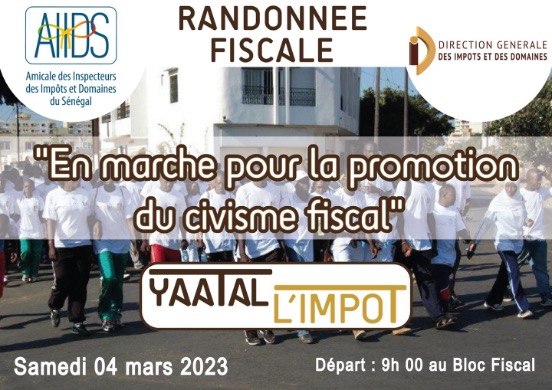The authors would like to thank the officials of the DGID and the Treasury of Senegal, met during field research, for the valuable information provided and their contributions to the reflections presented in this blog.
Citizen engagement through sensitization strategies is key in property tax reform efforts. Communication with citizens is all the more important in low-income countries, where property tax systems are often characterized by low tax compliance, limited collection capacities, widespread lack of awareness about the existence and importance of the tax, and low levels of trust. Reform experiences in Senegal illustrate how effective communication strategies about the importance of property taxes can increase public awareness and support for reforms.
Context
Since 2019, the Senegalese government has launched several initiatives to broaden its tax base, notably by updating its national cadastre as well as the property tax registry. These efforts have taken an increased importance with the new political leadership, which places taxation at the heart of the government agenda.
These reforms are being rolled out through national property identification and registration programs, under the supervision of the Directorate General of Taxes and Domains (DGID). One of the objectives is to significantly expand the taxpayer base and thus allow a substantial increase in municipal revenues.
To ensure the support and cooperation of the public, the DGID has deployed sensitization programs explaining the process, objectives and benefits of property censuses.
Mass Communication to Inform a Large Number of Citizens Nationwide
The first part of the Senegalese government’s communication strategy seeks to reach a large number of taxpayers across the country by using mass media to inform citizens about current census programs and upcoming activities, and potentially reduce their reluctance to provide the required information. To ensure that these strategies are accessible and adapted to the local context, the DGID uses both Wolof, the most widely spoken local language, and French in its communications. The DGID has therefore named the property identification program Yaatal, which means “to expand” in Wolof. The slogan of this programme – “yaatal natt teggui yokkuté“can be translated as the “contribution of all for inclusive development“. This slogan aims to remind people of the importance of tax compliance, highlighting that paying taxes contributes to funding services and infrastructure that benefit the community. In this way, the DGID promotes a better understanding of what is expected from property owners – that is, their cooperation during censuses.
Furthermore, several additional communication channels are used. The DGID broadcasts messages through the Senegalese Broadcasting and Television network (RTS), the main public channel, to supplement “The DGID Minute“, a pre-existing program that presented the various activities of the DGID. Television sketches are also aired to emphasize the importance of the Yaatal program and the need for taxpayer cooperation in national censuses. In addition, the DGID has a YouTube channel, which since the implementation of Yaatal, contains videos explaining what property taxes are, and payment methods including electronic payment platforms.

In order to reach different profiles of taxpayers and involve them in census efforts, the DGID also uses other communication channels such as newspaper articles, billboards, or even tax walks (see photo below).

Targeted Communication Adapted to Different Groups of Taxpayers
In parallel, the DGID has established community-based communication through actors known to or close to citizens, such as municipal, local, and religious leaders. In particular, the DGID works with mayors and neighbourhood delegates to raise awareness among taxpayers before and during census activities.
Neighbourhood delegates are representatives of mayors in their respective neighbourhoods, in charge, among other things, of raising awareness among the population on several issues including the payment of property taxes. Due to their intermediary role between local government and the population, their proximity to residents, and their knowledge of the local context, the neighbourhood delegates play a very important role in census programmes. They receive prior training from the DGID on the legal provisions concerning property tax as well as on the development of a communication plan. Delegates are then responsible for liaising between enumerators and taxpayers to facilitate the process. In addition, through the local tax commissions – bodies created to strengthen, among other things, collaboration between municipalities and the central tax administration – neighbourhood delegates can provide advice on sensitization strategies tailored to their respective neighbourhoods.
To tailor this community-based communication to the religious and cultural context, the DGID and the neighbourhood delegates also make sure to involve prominent actors such as religious leaders. As many regions in Senegal are divided into Muslim brotherhoods, the DGID makes sure to inform key figures so that they can disseminate information on the censuses within their communities. This type of strategy reinforces the legitimacy of the DGID’s programs by going through actors with recognized and respected moral authority.
Challenges in Communication Strategies and Sensitization
Despite the use of a wide range of communication channels and formats, which combine mass and community-based communication, as well as the adaptation of communication to the local context, some gaps seem to emerge.
In terms of mass communication, the DGID’s messages are sometimes perceived as not achieving the desired objectives. Information gathered during a field research visit to Senegal in August 2022 highlights that some neighbourhood delegates find that much of the communication, in particular the television sketches, is not sufficiently informative; overly simplified, they do not allow taxpayers to understand in detail the importance of taxation and reforms. For other delegates, the sketches should be complemented or replaced by short films that explain at greater length the objectives of identification and registration programmes, as well as how the information collected will be processed to promote better tax collection and service delivery.
These comments suggest a need to rethink the content of the messages disseminated so that they highlight key information more prominently and capture taxpayers’ interest, while remaining easily understandable.
Furthermore, the communication strategies used do not sufficiently show the link between the payment of taxes and the benefits to be derived from them. This shortcoming could come from the different conceptions that citizens and the DGID have of taxation. On the one hand, it is likely that taxpayers expect tangible benefits in exchange for compliance. If they do not clearly understand what their taxes as a result of these censuses will be used for, and how that benefits them, they may be less inclined to provide information that would identify them as taxpayers. On the other hand, the DGID’s communication insists more on the civic duty of taxpayers rather than on the reciprocal nature of taxation and the social contract between the State and citizens.
From a legal point of view the payment of property tax does not imply a specific reciprocity, unlike taxes levied to finance particular services. As a result, the messages conveyed do not emphasize the reciprocal nature of property taxation. However, doing so could encourage support for reform and tax compliance in the future. Several studies show that a focus on the communication of long-term benefits for the municipality and the citizens – in particular, on the improvement of public infrastructure and services – tends to increase tax compliance.[i] It therefore seems preferable to more explicitly highlight that property tax revenues accrue to municipalities, enabling them to fulfill their roles in local development, infrastructure, and waste management.
Finally, the incentives provided to neighbourhood delegates do not seem to match their work and involvement in the censuses. The support role in property tax management entrusted to the neighbourhood delegates is in addition to their other functions and becomes an additional burden in their daily activities. The implementation of support measures and incentives such as administrative assistance, access to transportation, seminars on communication strategies, or greater participation in decision-making regarding reforms, would motivate them to mobilize the population more in these censuses.
Lessons Learned
Citizen engagement and communication play a crucial role in property tax reform processes. Adequate communication strategies can foster citizen collaboration and increase their buy-in for reforms. The case of Senegal provides valuable lessons on various approaches to citizen engagement in tax reforms, as well as potential strategies to encourage voluntary tax compliance.
Senegal’s experience highlights that the success of these strategies depends on two essential aspects:
- The adequacy and relevance of the content of the messages in relation to the expectations of the population; these aspects can be strengthened by consultation with local actors such as neighbourhood delegates in the development of communication strategies while equipping them with the necessary skills and resources to support the reform[ii];
- That the communication emphasizes the benefits of the reform, explicitly highlighting the link between increased revenues and improved public services.
[i] See for example Blöchliger, H. and Vammale, C. 2012. Reforming Fiscal Federalism and Local Government: Beyond the Zero-Sum Game. OECD Fiscal Federalism Studies. OECD Publishing: Paris. https://sx.doi.org/10.1787/9789264119970-en; and literature review in: Collier, Paul, Edward Glaeser, Tony Venables, Michael Blake, and Priya Manwaring (2018) “Land and Property Taxes for Municipal Finance.” IGC Working Paper. International Growth Centre, 2018.
[ii]On this subject, see also van den Boogaard, V., Prichard, W., Beach, R. and Mohiuddin, F. 2022. Enabling tax bargaining : Supporting more meaningful tax transparency and taxpayer engagement in Ghana and Sierra Leone. Development Policy Review Volume 40, Issue 1. ODI. https://doi.org/10.1111/dpr.12563
Photo credit to Freepik.




